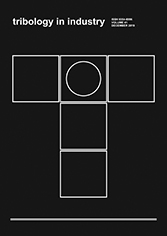Volume 44, No 2, 2022, Pages 253-267
Optimization of Abrasive Wear Parameters of Halloysite Nanotubes Reinforced Silk/Basalt Hybrid Epoxy Composites using Taguchi Approach
Authors:
S.M. Darshan ![]() ,
Bheemappa Suresha
,
Bheemappa Suresha ![]()
![]() ,
,
Imran M. Jamadar ![]()
DOI: 10.24874/ti.1131.06.21.08
Received: 10 June 2021
Revised: 2 August 2021
Accepted: 29 August 2021
Published: 15 June 2022
Abstract:
The demand for environmentally friendly and sustainable materials for nonstructural and structural applications grows by the day. Polymeric composites reinforced with fillers and fibres are considered to have increased strength and desirable wear resistance. Abrasive wear of industrial and agricultural based components are currently one of the most serious issue. Therefore, the current research reports on the influence of Halloysite-Nanotubes (HNTs) loading on the three body abrasive behavior of bi-directional silk fibre (SF) and basalt fibre (BF) reinforced epoxy (Ep) composites. Rubber wheel with dry sand abrasion testing in accordance with ASTM G65-16e1 was performed with four control parameters such as filler content, load, abrading distance and silica sand size. The tests were planned as per orthogonal array of Taguchi (L27). Significant impact of control factors were identified using ANOVA (Analysis of variance). The results demonstrated that adding HNTs to SF-BF/Ep nanocomposites significantly improved the wear resistance and the combination of A2, B1, C3 and D1 control factors yields the lower specific wear rate (SWR). Findings exhibit that the load and abrading distance were the most significant parameters affecting the abrasive wear of SF-BF/Ep nanocomposites followed by filler content and silica sand size. Microstructural features were observed via scanning-electron-microscopy (SEM).
Keywords:
Silk fibre, Basalt fibre, HNTs, Hybrid nanocomposites, Three body abrasive wear, Taguchi method





